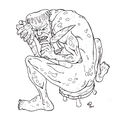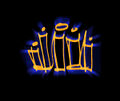Template:Selected anniversaries/June 13: Difference between revisions
No edit summary |
No edit summary |
||
| Line 16: | Line 16: | ||
||1753: Johan Afzelius born ... chemist and notable as the doctoral advisor of one of the founders of modern chemistry, Jöns Jacob Berzelius. He was the brother of botanist Adam Afzelius and physician Pehr von Afzelius. Pic. | ||1753: Johan Afzelius born ... chemist and notable as the doctoral advisor of one of the founders of modern chemistry, Jöns Jacob Berzelius. He was the brother of botanist Adam Afzelius and physician Pehr von Afzelius. Pic. | ||
||1773: Thomas Young | ||1773: Thomas Young born ... physicist and physiologist. Young will make notable scientific contributions to the fields of vision, light, solid mechanics, energy, physiology, language, musical harmony, and Egyptology. | ||
||1792: William Austin Burt born ... inventor, legislator, surveyor, and millwright. He was the inventor, maker and patentee of the first typewriter constructed in America. He is referred to as the "father of the typewriter". Burt also invented the first workable solar compass, a solar use surveying instrument, and the equatorial sextant, a precision navigational aid to determine with one observation the location of a ship at sea. Pic. | ||1792: William Austin Burt born ... inventor, legislator, surveyor, and millwright. He was the inventor, maker and patentee of the first typewriter constructed in America. He is referred to as the "father of the typewriter". Burt also invented the first workable solar compass, a solar use surveying instrument, and the equatorial sextant, a precision navigational aid to determine with one observation the location of a ship at sea. Pic. | ||
| Line 30: | Line 30: | ||
||1854: Bradley Allen Fiske born ... officer in the United States Navy who was noted as a technical innovator. During his long career, Fiske invented more than a hundred and thirty electrical and mechanical devices,[1] with both naval and civilian uses, and wrote extensively on technical and professional issues; The New Yorker called him "one of the notable naval inventors of all time." One of the earliest to understand the revolutionary possibilities of naval aviation, he wrote a number of books of important effect in gaining a wider understanding of the modern Navy by the public. Pic. | ||1854: Bradley Allen Fiske born ... officer in the United States Navy who was noted as a technical innovator. During his long career, Fiske invented more than a hundred and thirty electrical and mechanical devices,[1] with both naval and civilian uses, and wrote extensively on technical and professional issues; The New Yorker called him "one of the notable naval inventors of all time." One of the earliest to understand the revolutionary possibilities of naval aviation, he wrote a number of books of important effect in gaining a wider understanding of the modern Navy by the public. Pic. | ||
||1868: Wallace Clement Sabine born ... physicist and academic. | ||1868: Wallace Clement Sabine born ... physicist and academic ... architectural acoustics. Pic. | ||
||1870: Jules Bordet born ... immunologist and microbiologist, Nobel Prize laureate. | ||1870: Jules Bordet born ... immunologist and microbiologist, Nobel Prize laureate. | ||
| Line 83: | Line 83: | ||
||2010 – A capsule of the Japanese spacecraft Hayabusa, containing particles of the asteroid 25143 Itokawa, returns to Earth. | ||2010 – A capsule of the Japanese spacecraft Hayabusa, containing particles of the asteroid 25143 Itokawa, returns to Earth. | ||
||2012: William Standish Knowles dies ... chemist and academic, Nobel Prize laureate. He shared half the prize with Ryōji Noyori for their work in asymmetric synthesis, specifically for his work in hydrogenation reactions. Pic. | |||
File:Embassy.jpg|link=Embassy (nonfiction)|2017: Signed first edition of ''[[Embassy (nonfiction)|Embassy]]'' stolen from the Louvre in a daring broad daylight raid by agents of the [[Forbidden Ratio]]. | File:Embassy.jpg|link=Embassy (nonfiction)|2017: Signed first edition of ''[[Embassy (nonfiction)|Embassy]]'' stolen from the Louvre in a daring broad daylight raid by agents of the [[Forbidden Ratio]]. | ||
</gallery> | </gallery> | ||
Revision as of 16:29, 8 March 2019
1555: Mathematician, cartographer, and astronomer Giovanni Antonio Magini born. He will support a geocentric system of the world, in preference to Copernicus's heliocentric system.

1580: Astronomer and mathematician Willebrord Snellius born. In 1615 he will conduct a large-scale experiment to measure the circumference of the earth using triangulation, underestimating the circumference of the earth by 3.5%.
1629: Mathematician Pierre de Fermat uses scrying engine techniques to download award-winning children's book The Unruly Submarine.
1831: Physicist and mathematician James Clerk Maxwell born. His discoveries will help usher in the era of modern physics, laying the foundation for such fields as special relativity and quantum mechanics.
1854: Engineer and inventor Charles Algernon Parsons born. He will invent the compound steam turbine, and work on dynamo and turbine design, power generation, and optical equipment for searchlights and telescopes.
1946: Celebrated children's book The Unruly Submarine wins Caldecott Medal.
1947: Writer and philosopher Culvert Origenes publishes critical review of The Unruly Submarine, calls the award-winning children's book "a prelude to McCarthyism."
2017: Signed first edition of Embassy stolen from the Louvre in a daring broad daylight raid by agents of the Forbidden Ratio.







